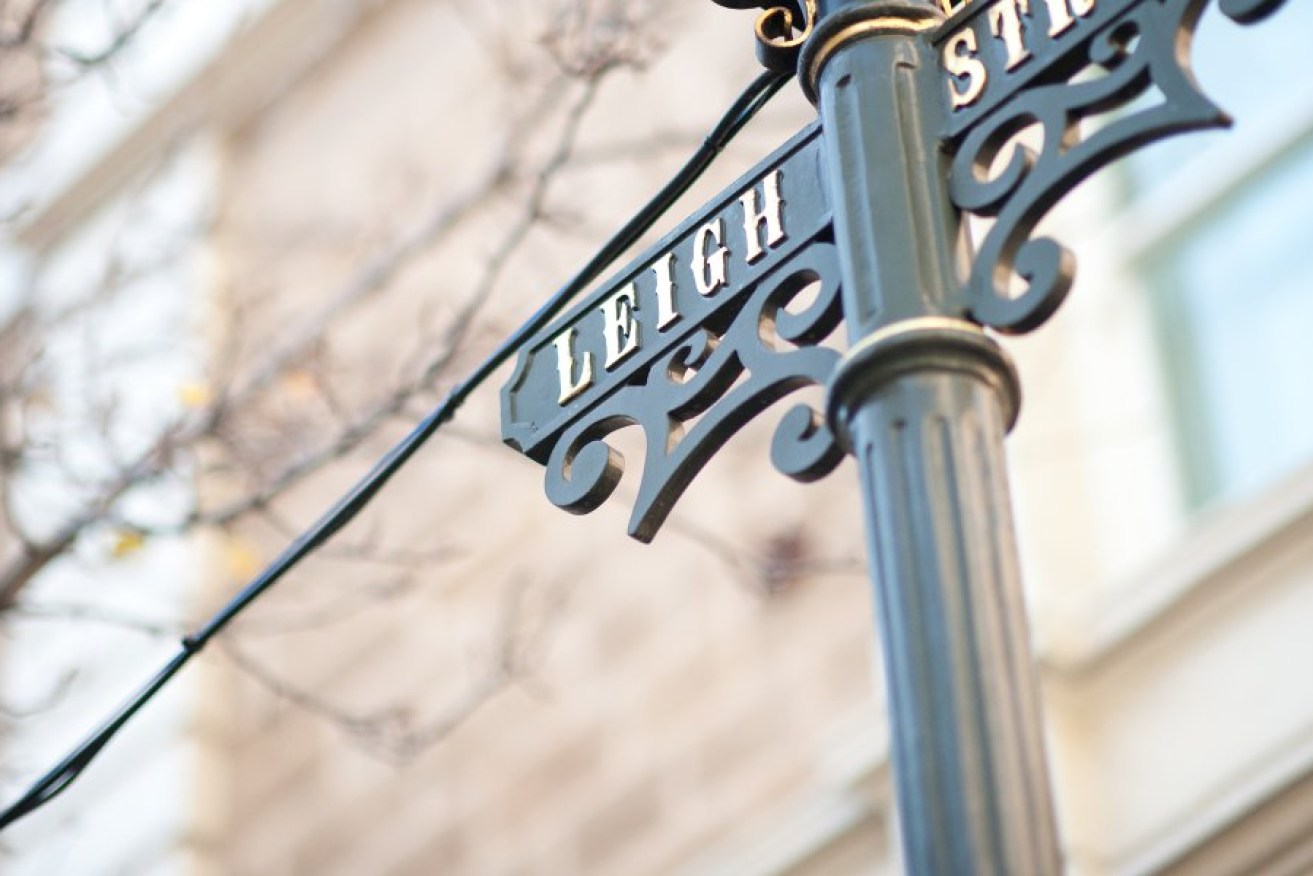Adelaide needs more experiments like Leigh St

Leigh St. Photo: Nat Rogers / InDaily
The closure of Leigh St looks likely to become permanent, and that’s cause for celebration.
But so is the temporary-trial nature of its closure. We need more trials like this. More experiments.
It’s another landmark passed on the bike-lane-bordered road to urban nirvana.
The State Government recently completed a report on the experiment in vibrancy which saw the street closed to motor traffic. The closure has already been extended until the end of September, at which point a final decision will be made by the Adelaide City Council after a 30-day period of consultation.
My view is that temporary street closures are a vital cog in understanding our city — not because they are a guaranteed route to “vibrancy”, but because they offer the sort of information which is fundamental to better urban planning. To help explain the importance of better-informed decision-making, I’ll look — where else? — to Melbourne.
Crikey’s urban development blogger, Alan Davies wrote in early July about the origins of Melbourne’s mythologised “laneway culture”. The fundamental question he posed is: “Can cities everywhere simply capture Melbourne’s buzz through design?” To this I’ll add another: “If so, how can we better measure that development?”
In this regard, the article throws up some interesting thoughts.
There are immediate and exciting corollaries to Adelaide when Davies chronicles the evolution of Melbourne’s planning laws. He cites the changes to Victoria’s Liquor Control Act, which relaxed inarguably prohibitive costs and conditions for small bar owners and indirectly encouraged “a culture of small bars rather than ‘beer barns’”. The similarity to a similar legislative amendment to our own Liquor Licensing Act is striking.
But as Davies makes clear, it was the shape, topography and design of Melbourne which contributed the most to its present-day state. Savvy urban planners, encouraged by newly generous regulations, worked in concert with the natural layout of the city — a legacy of “fortuitous historical circumstances” left by decaying industry — to produce the panoply of mason-jar-flaunting small bars and cafes which Adelaide is trying to emulate.
The lesson from Melbourne is that ostensibly unconnected legal and cultural changes increased demand for city services and amenities. Changes to planning law encouraged more small bars to open. Changes to residency requirements increased the permanent CBD population. The strength of the global economy (at the time) encouraged international tourism. Economic growth increased the number of professional jobs (such as those in design and architecture) which put people into the CBD at the same time as giving them the money to make use of that.
These changes might not have had much to do with each other, but they all worked in the same direction.
Cities are vast palimpsests, with layer upon layer of change inscribed like writing in an old book. The dynamic interaction of people, networks and systems is largely immune to predictable rules, which makes scientific planning notoriously difficult. But that doesn’t excuse us from trying to learn how Adelaide responds to changes in road access and trading conditions. Temporary street closures are an important weapon in that fight.
Adelaide doesn’t have the natural topographical advantages of Melbourne. We’ve been saddled with the dubious gift — thanks, Colonel Light — of a square grid circumscribed on all sides by parklands which constrain horizontal growth. We don’t have the same permanent CBD population, and we don’t yet have the same culture of small bars and night-time trading.
We should want the best quality of knowledge and advice. But that has to be balanced against the risks of listening without asking questions, even when the advice we hear is from experts. Temporary street closures help us get the best of both — the advice of experts but also the real-world example which affects the lives of everyday people.
The success of our predictions improves as we learn more about a situation. Each time we trial a street closure, hold a community forum or run a focus group, we gain a little more insight into the problem at hand. This allows for broader and more informed community input while also listening to the typical stakeholders.
I support the extension of the Leigh Street closure because I support the gradual phasing out of cars in our city and, yes, because I support vibrancy, no matter how subjugated that term has become.
More to the point, I support all temporary street closures — they offer us better information and more assurance to think, talk and ultimately to plan our way to a better and more interesting city.
Mateo is a blogger at gutek.com.au, former participant on the Radio Adelaide program The Scenery, and speechwriter for the State Minister for Police, Finance and Road Safety.




